Tsavo National Park
Tsavo National Park is vast. Put together, the western and eastern areas of Tsavo make up one of the largest animal sanctuaries in the world – imagine the whole of Wales being a park. Tsavo East became renowned, or perhaps more correctly, infamous in the early 20th century, as the home of man-eating lions which treated the railway workers building the Mombasa to Kampala line as a new food source. Tsavo was also the setting in the First World War of battles between British and German troops vying for supremacy in East Africa. Tsavo is old, in that it is one of Kenya’s longest established parks and yet at the same time young, because the Ngulia Hills that dominate the area are of comparatively recent volcanic origin.
Tsavo West, Volcanic activity such as the cones, outcrops and lava flows are still visible. The most striking of the hardened flows is Shaitana, which looks like it cooled down only recently and whose name (meaning ‘devil’ in Swahili) seems particularly apposite as it burst from beneath the ground. The surrounding cave formations should not be missed but you will need a torch.
As each year draws to an end the Ngulia hills become host to an amazing nightly display when birds, literally in their thousands, appear out of the darkening mists. Some 40 species make this journey to escape the cold winters of Northern Europe. A netting and ringing project has tracked some of them back to as far as northern Russia.
The region is also home to an incredibly important water source – the Mzima Springs. The springs produce approximately 50 million gallons of water a day – 30 million of which are piped to Mombasa. The source of the springs is the ice-cap on Kilimanjaro and the rains that fall on the Chyulu Hills which soak through the porous volcanic rock to form subterranean rivers. The springs attracts Hippo, barbels and crocodiles and an underwater viewing platform allows you to see the animals. The best observation time is in the early morning before the hippos get too hot and shelter themselves out of sight in the surrounding papyrus cover.
Lake Jipe in southwest of Tsava West is very important wetland. Birds commonly seen are pied-kingfishers, knob-billed geese, palm nut vultures and the African skimmer. A few rhino are left in Tsavo protected in a enclosed sanctuary at the foot of the Ngulia Hills. Other wildlife includes cheetah, buffalo, oryx, eland, zebra, leopard, buffalo, spotted hyena, kongoni, waterbuck, impala, duiker and klipspringer. The lions of Tsavo may once have been infamous but when the rains have fallen and the grass is long – they are very difficult to spot.
Tsavo East is the much less visited side of the park and a wildlife photographer’s dream. Large elephant herds roam the vast scrubland plains that make up most of the terrain. An exception to this terrain is the Yatta Plateau. The plateau, standing at 1000 ft high and stretching for roughly 180 miles, can attribute its existence to the planet’s largest lava flow. Erosion over the years has sculpted the plateau into its present, slightly brooding shape. Lugard’s Fall, another highlight, are the waters of the Galana river rushing through water polished rocks. Crocodiles and hippos live downstream and can best seen at Crocodile Point.
In addition to the wildlife species that it has in common with Tsavo West; the eastern park has rare local birds which come in a rainbow of hues and include the colourful yellow throated longclaws, rosy-patched shrikes, red and yellow barbets, carmine bee-eaters and the white-headed buffalo weaver – to list just a few of the 500 species that have been recorded here.
Tsavo National Park Accommodation
Talk to a Specialist
Choose a Safari Specialist in your time zone and start planning your tailor-made safari to Kenya.
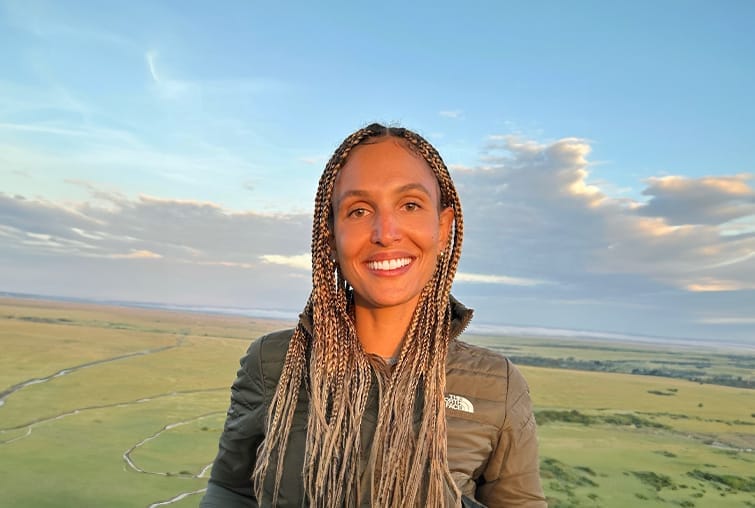
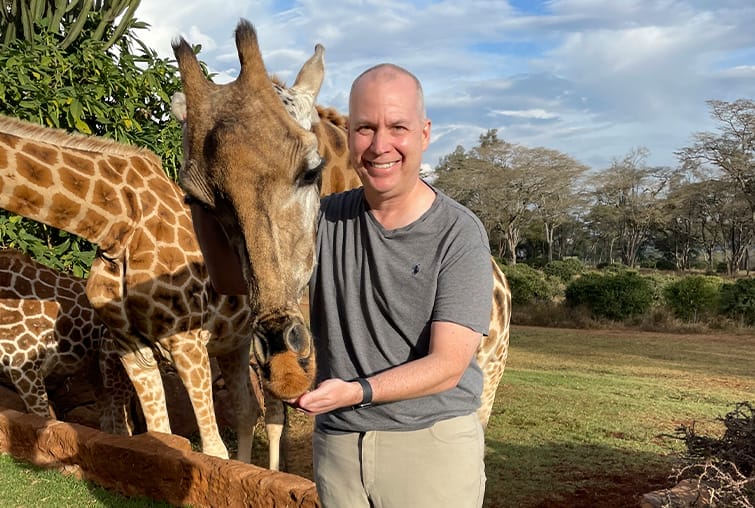
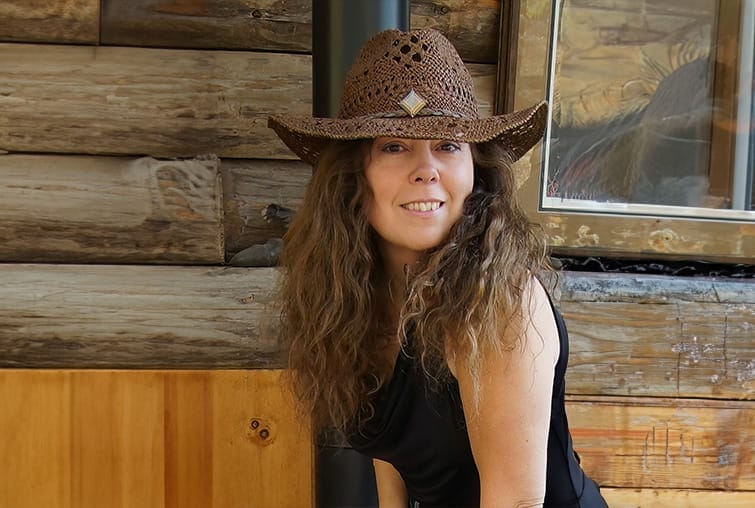


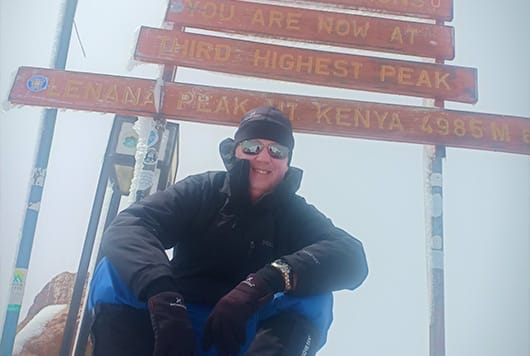

Hola, I’m Andrea and my love affair with the captivating world of safaris began during my teenage years when I embarked on my very first safari in Kenya. There, amidst the awe-inspiring wildlife and expansive plains, I found my true passion. Over the years, Kenya has called me back time and time again, leading me to explore its myriad camps, conservancies, and renowned parks. More recently, I’ve had the privilege of staying at all the Porini Camps, where the spotlight shines on wildlife conservation—a cause close to my heart as I traverse the globe. While Kenya holds a special place in my wanderlust-filled heart, Tanzania, Uganda, and Rwanda have also woven their magic into my soul. If you’re eager to embark on your own safari adventure or share your passion for conservation, please feel free to contact me at andrea@gamewatchers.com
Let’s connect and embark on a journey through Africa’s wild wonders together.
Andrea Landaeta

Hello, I’m Pranay Chandra, a veteran of the Indian Armed Forces whose profound passion for nature and wildlife led me to the world of wildlife photography. My lens has captured the essence of the wild, earning recognition in esteemed competitions like the Sanctuary Asia annual wildlife awards and the Natural History Museum’s Wildlife Photographer of the Year awards. Beyond photography, I’ve dedicated myself to conservation efforts, collaborating with Ecological Task Forces and supporting WWF India’s training initiatives in tiger reserves. In the realm of education, I’ve partnered with CEC, New Delhi, to create informative video programs on Human-Wildlife Conflicts. I’ve ventured to Kenya, embracing the splendors of Africa while staying at Porini camps and other renowned lodges. I’m based in Bangalore, India, and you can connect with me via email at pranay@gamewatchers.com or reach me by phone at +91 801 788 5256, including WhatsApp. Let’s embark on a journey to celebrate the beauty and conservation of our natural world together.
Pranay Chandra

Hello, I’m Kristy, your Australian-based Safari Advisor with Gamewatchers Safaris and Porini Camps. My background in ecology and conservation management, combined with a deep passion for nature and the great outdoors, led me to Kenya where I instantly fell in love with its spectacular wildlife and warm-hearted people. Having spent significant time at our Porini Camps and explored other camps we offer, I bring intricate knowledge to help craft your ultimate wildlife safari adventure. Whether you’re seeking the thrill of the savannah or the serenity of the wilderness, I’m here to make your safari dreams a reality.
Feel free to reach out to me on the Gold Coast, Australia, at kristy@gamewatchers.com or call +61 419 175 672
Kristy Thomson
Form Off Contact Specialist Box
Talk to a Specialist
Choose a Safari Specialist in your time zone and start planning your tailor-made safari to Kenya.
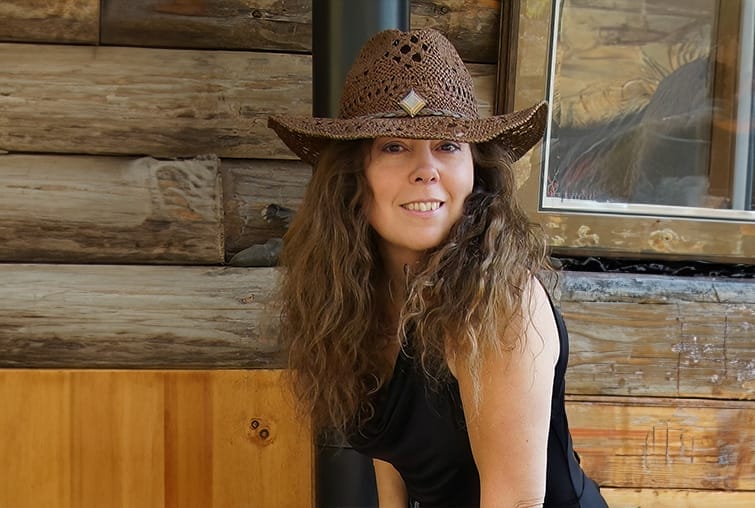
Julie Roggow
Julie Roggow
Greetings, I'm Julie Roggow, and I come to you with over two decades of immersion in the world of travel. My journey into the heart of safari adventures began as I traversed Kenya, Uganda, Tanzania, Rwanda, Botswana, Zimbabwe, and South Africa, capturing the essence of these mesmerizing landscapes through my lens. Among these remarkable destinations, Kenya and the Porini safari camps hold a special place in my heart. Their unique blend of wilderness and conservation resonates deeply with me.
My passion for travel is matched only by my dedication to sharing that passion with others. I'm here to ensure that planning your safari vacation is an enjoyable and seamless experience.
Feel free to reach out to me by email at julie@gamewatchers.com or through our toll-free telephone line at +1-877-710-3014.
Rick McIntyre
Hello, I'm Rick, based in Ontario, Canada, with over 15 years in the travel industry and a passport filled with stamps from over 70 countries. My heart was captured by Africa during my first visit to Kenya, and since then, I've journeyed back repeatedly, exploring the diverse landscapes and wildlife of Kenya, Tanzania, Rwanda, Zambia, Zimbabwe, Botswana, Namibia, and South Africa. Whether you're dreaming of a "once in a lifetime" vacation or you're a seasoned safari traveler, I'm here to assist in planning your perfect African adventure.
You can contact me at rick@gamewatchers.com or give me a call at +1-877-710-3014.
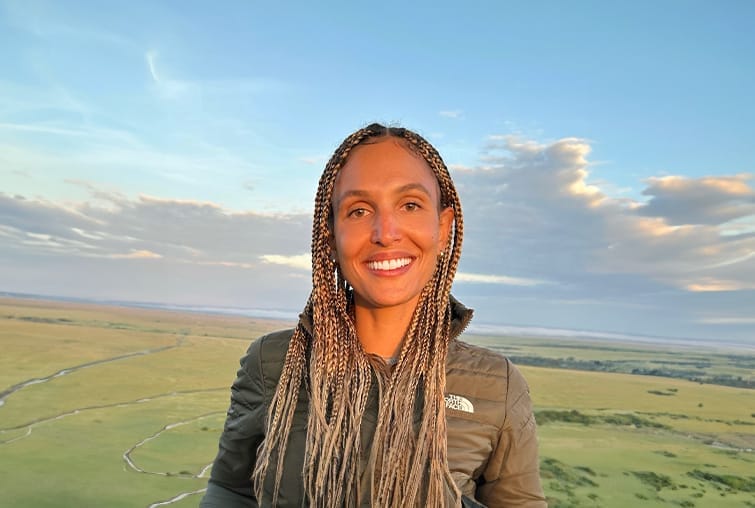
Rachel Chambers
You can contact Rae at rae@gamewatchers.com

Julie Roggow
Julie Roggow
Greetings, I'm Julie Roggow, and I come to you with over two decades of immersion in the world of travel. My journey into the heart of safari adventures began as I traversed Kenya, Uganda, Tanzania, Rwanda, Botswana, Zimbabwe, and South Africa, capturing the essence of these mesmerizing landscapes through my lens. Among these remarkable destinations, Kenya and the Porini safari camps hold a special place in my heart. Their unique blend of wilderness and conservation resonates deeply with me.
My passion for travel is matched only by my dedication to sharing that passion with others. I'm here to ensure that planning your safari vacation is an enjoyable and seamless experience.
Feel free to reach out to me by email at julie@gamewatchers.com or through our toll-free telephone line at +1-877-710-3014.
Rick McIntyre
Hello, I'm Rick, based in Ontario, Canada, with over 15 years in the travel industry and a passport filled with stamps from over 70 countries. My heart was captured by Africa during my first visit to Kenya, and since then, I've journeyed back repeatedly, exploring the diverse landscapes and wildlife of Kenya, Tanzania, Rwanda, Zambia, Zimbabwe, Botswana, Namibia, and South Africa. Whether you're dreaming of a "once in a lifetime" vacation or you're a seasoned safari traveler, I'm here to assist in planning your perfect African adventure.
You can contact me at rick@gamewatchers.com or give me a call at +1-877-710-3014.

Rachel Chambers
You can contact Rae at rae@gamewatchers.com

Julie Roggow
Julie Roggow
Greetings, I'm Julie Roggow, and I come to you with over two decades of immersion in the world of travel. My journey into the heart of safari adventures began as I traversed Kenya, Uganda, Tanzania, Rwanda, Botswana, Zimbabwe, and South Africa, capturing the essence of these mesmerizing landscapes through my lens. Among these remarkable destinations, Kenya and the Porini safari camps hold a special place in my heart. Their unique blend of wilderness and conservation resonates deeply with me.
My passion for travel is matched only by my dedication to sharing that passion with others. I'm here to ensure that planning your safari vacation is an enjoyable and seamless experience.
Feel free to reach out to me by email at julie@gamewatchers.com or through our toll-free telephone line at +1-877-710-3014.
- 1
- 2
- 3
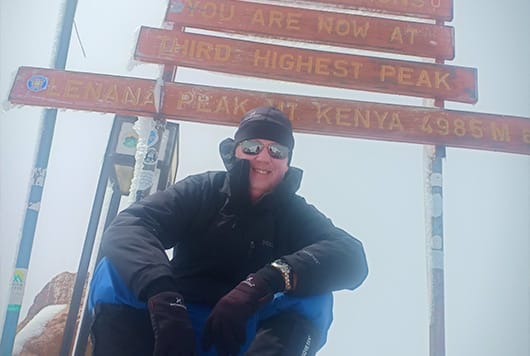
Wayne Hammond
Wayne Hammond
Hello, I'm Wayne Hammond, and I'm fortunate to have embarked on over 30 incredible journeys to the enchanting continent of Africa. It's a place that has captured my heart time and time again. My travels have taken me to Kenya, which I've had the pleasure of visiting far more times than I can recall, as well as to Tanzania, Zimbabwe, Zambia, Botswana, Rwanda, Uganda, South Africa, and Mozambique. Among my cherished bush haunts, I hold dear the Masai Mara in Kenya, the mesmerizing Mana Pools in Zimbabwe, and the wondrous South Luangwa National Park in Zambia. I'm not just a passionate traveler but also an avid amateur wildlife photographer and an occasional travel writer.
If you're ready to embark on your own African adventure, don't hesitate to reach out to me at wayne@gamewatchers.com or give me a call at +44 7986 978 985.
Andrea Landaeta
Hola, I’m Andrea and my love affair with the captivating world of safaris began during my teenage years when I embarked on my very first safari in Kenya. There, amidst the awe-inspiring wildlife and expansive plains, I found my true passion. Over the years, Kenya has called me back time and time again, leading me to explore its myriad camps, conservancies, and renowned parks. More recently, I've had the privilege of staying at all the Porini Camps, where the spotlight shines on wildlife conservation—a cause close to my heart as I traverse the globe. While Kenya holds a special place in my wanderlust-filled heart, Tanzania, Uganda, and Rwanda have also woven their magic into my soul. If you're eager to embark on your own safari adventure or share your passion for conservation, please feel free to contact me at andrea@gamewatchers.com
Let's connect and embark on a journey through Africa's wild wonders together.
Pranay Chandra
Hello, I’m Pranay Chandra, a veteran of the Indian Armed Forces whose profound passion for nature and wildlife led me to the world of wildlife photography. My lens has captured the essence of the wild, earning recognition in esteemed competitions like the Sanctuary Asia annual wildlife awards and the Natural History Museum’s Wildlife Photographer of the Year awards. Beyond photography, I’ve dedicated myself to conservation efforts, collaborating with Ecological Task Forces and supporting WWF India’s training initiatives in tiger reserves. In the realm of education, I’ve partnered with CEC, New Delhi, to create informative video programs on Human-Wildlife Conflicts. I’ve ventured to Kenya, embracing the splendours of Africa while staying at Porini camps and other renowned lodges.
You can connect with me via email at pranay@gamewatchers.com or by phone at +91 801 788 5256
Form Off Contact Specialist Box
Curating ultimate tailor-made safari experiences for 35 years
How To Make The Best Choice For Your Wildlife Safari in Kenya
Don’t miss out on our free copy of our 36 page Guide to Choosing a Safari in Kenya. A must-read before booking any safari tour to ensure you make the most of your time and budget and get the best possible experience.
How To Make The Best Choice For Your Wildlife Safari in Kenya
Don’t miss out on our free copy of our 36 page Guide to Choosing a Safari in Kenya. A must-read before booking any safari tour to ensure you make the most of your time and budget and get the best possible experience.
How To Make The Best Choice For Your Wildlife Safari in Kenya
Don’t miss out on our free copy of our 36 page Guide to Choosing a Safari in Kenya. A must-read before booking any safari tour to ensure you make the most of your time and budget and get the best possible experience.






























